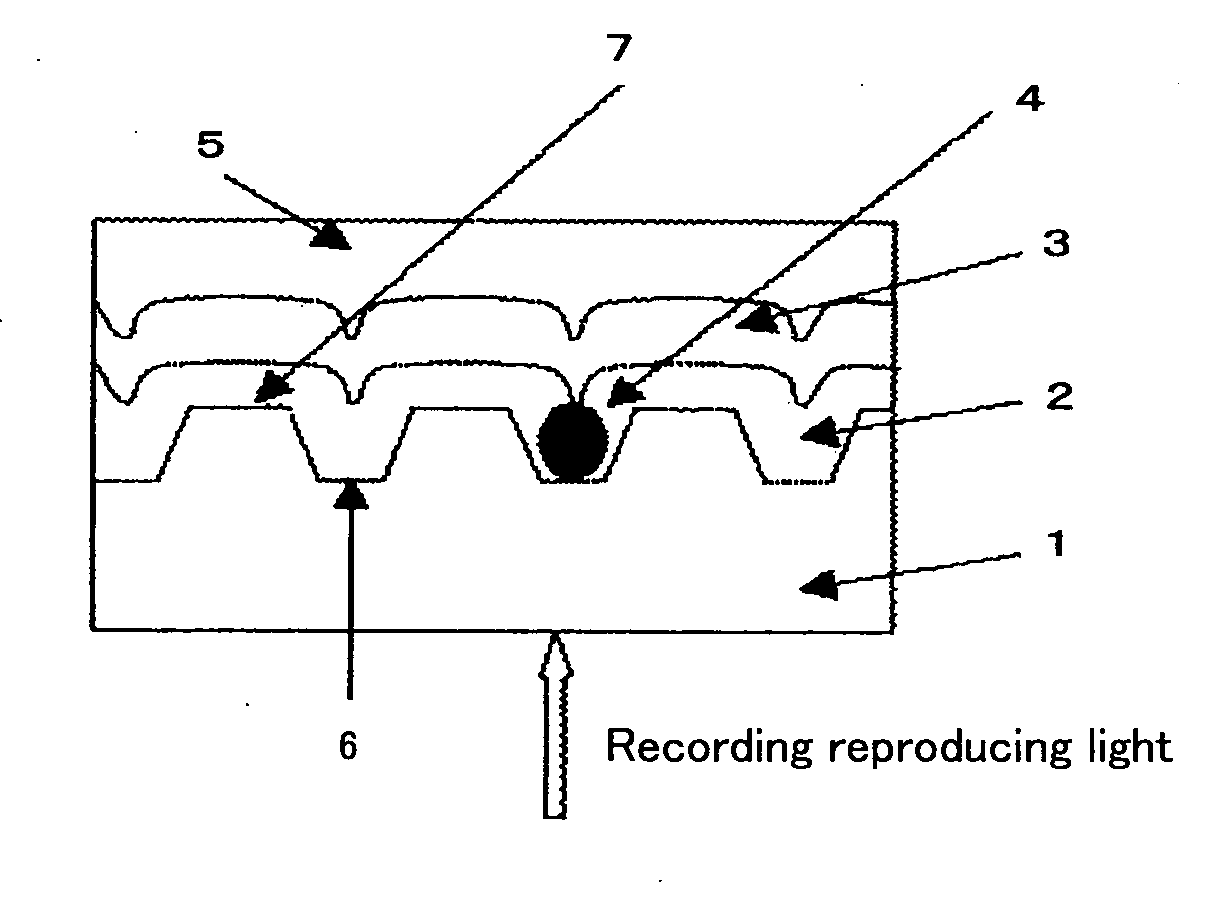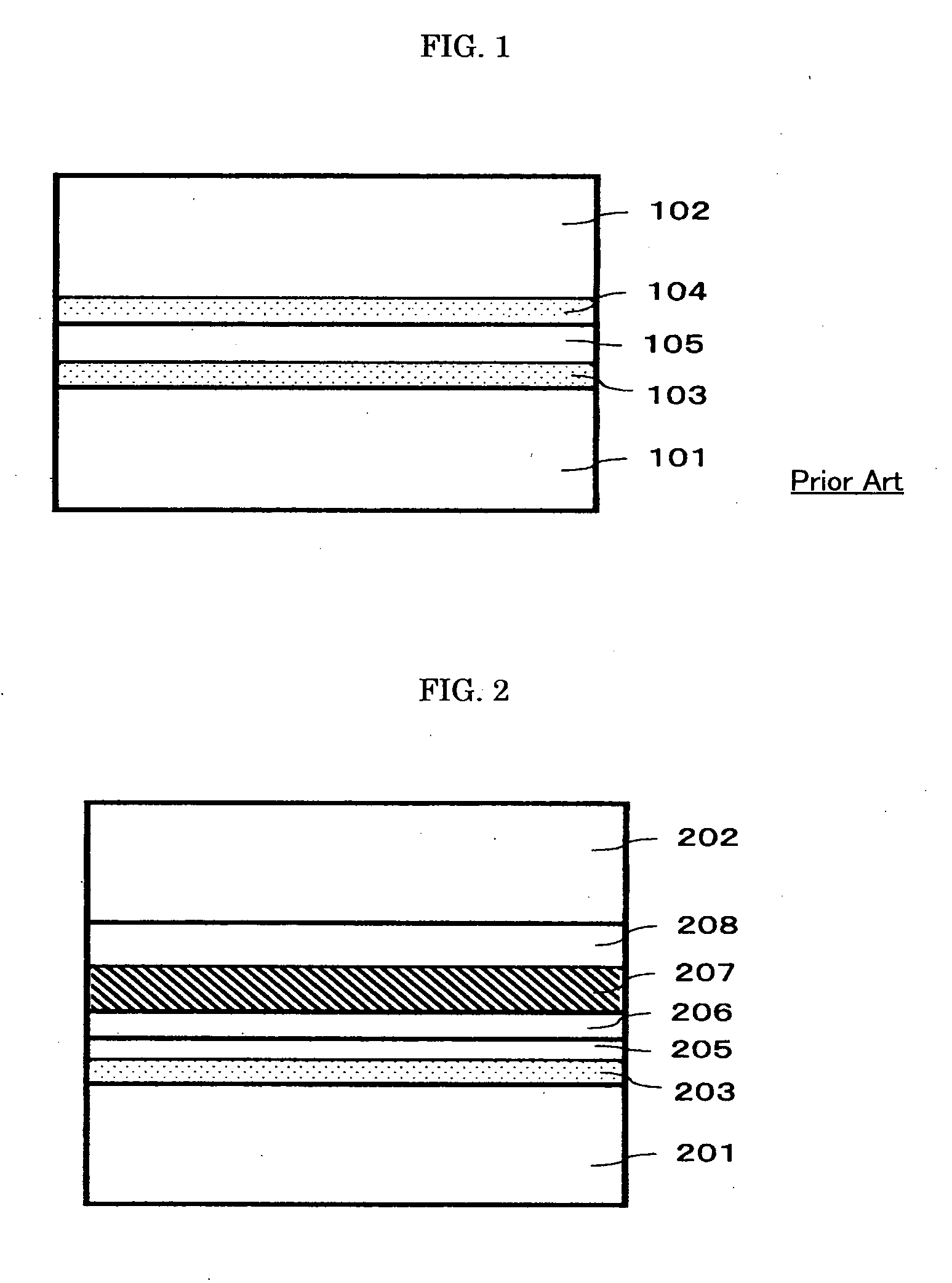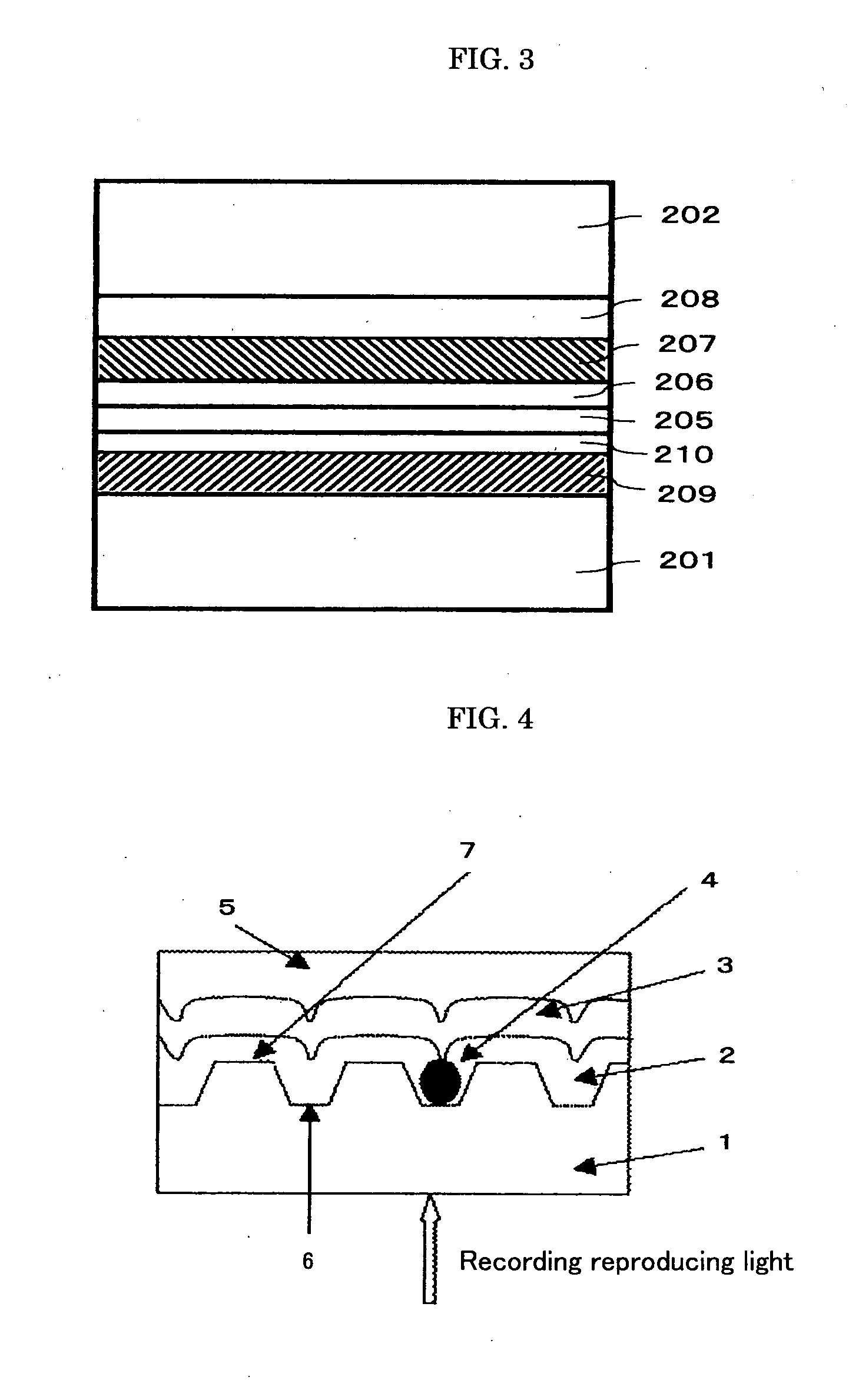Squarylium compound, optical recording medium using the same, recording/reproduction method and optical recording apparatus
a technology of squarylium compound and optical recording medium, applied in the field of squarylium compound, can solve the problems of degradation of signal jitter, inability to achieve a sufficient recording speed and satisfactory recording power, and difficulty of conventional recording mediums to meet such a high-speed requirement, etc., to achieve good recording signal characteristics, good recording characteristics, and improved resistance to light
- Summary
- Abstract
- Description
- Claims
- Application Information
AI Technical Summary
Benefits of technology
Problems solved by technology
Method used
Image
Examples
example 1
[0208]15.5 g of benzylacetone and 12.2 g of 1-methyl-]-phenylhydrazine were dissolved into 30 ml of butanol. After one hour at 60° C., to the solution was added 4.9 g of sulfuric acid. After four hours at 100° C., 30 ml of water was added and the insoluble was filtered. A solution of the obtained solid in 25 ml of isopropanol and 14.9 g of benzyl bromide was treated at 80° C. for 5 hours. After filtering the produced solid, 7 ml of toluene and 10 ml of a 10% aqueous sodium hydroxide were added to the obtained solid and 14 ml of a butanol solution containing 6.49 g of 3-hydroxy-4-(5-hydroxy-1-phenyl-3-trifluoromethylpyrazole-4-yl)cyclobut ene-1,2-dione was added to the organic layer and treated at 110° C. for 20 hours. Subsequently, 9.90 g of the compound [1] was obtained by filtering the deposit. 12 ml of toluene, 12 ml of ethanol, 0.10 g of acetic acid and 0.66 g of aluminumtris(ethylacetoacetate) were added to 3.0 g of the compound [1] and made to react at 80° C. for 3 hours. Thus...
example 2
[0210]The process of Example 1 was followed except that 1-methyl-1-pehnyhydrazine was replaced by 1-benzyl-1-phenylhydrazine to obtain 10.66 g of the compound [4]. Thereafter, the process of Example 1 was also followed except that the compound [1] was replaced by the compound [4] to obtain 1.20 g of the compound 4-Al. Some of the results of an analysis by NMR are listed below.
[0211]1H NMR δ (CDCl3) ppm: 2.83-4.95 (2H, m), 5.63-7.97 (72H, m).
example 3
[0212]35 ml of butanol was added to 10.4 g of benzylacetone and 11.1 g of p-tolylhydrazine hydrochloride. After agitating the solution at 100° C. for 4 hours, 30 ml of water was added and the insoluble was filtered. 100 g of dimethylsulfoxide and 9.90 g of potassium t-butoxide were added to the obtained solid and treated at 30° C. for 30 minutes and subsequently 11.8 of methyl iodide was added. After agitating for 1.5 hours, a 3N aqueous solution of hydrochloric acid was added and the insoluble was filtered. Then, 80 ml of isopropanol and 8.27 g of benzyl bromide were added to the obtained solid and treated at 80° C. for 8 hours. After the reaction, 80 ml of toluene was added and the deposit was filtered. Then, 9 ml of toluene and 9 ml of a 10% aqueous solution of sodium hydroxide were added to the obtained solid and 18 nil of butanol solution containing 8.10 g of 3-hydroxy-4-(5-hydroxy-1-phenyl-3-trifluoromethylpyrazole-4-il)cyclobutene-1,2-dione was added to the organic layer and ...
PUM
| Property | Measurement | Unit |
|---|---|---|
| recording wavelength | aaaaa | aaaaa |
| thickness | aaaaa | aaaaa |
| thickness | aaaaa | aaaaa |
Abstract
Description
Claims
Application Information
 Login to View More
Login to View More - R&D
- Intellectual Property
- Life Sciences
- Materials
- Tech Scout
- Unparalleled Data Quality
- Higher Quality Content
- 60% Fewer Hallucinations
Browse by: Latest US Patents, China's latest patents, Technical Efficacy Thesaurus, Application Domain, Technology Topic, Popular Technical Reports.
© 2025 PatSnap. All rights reserved.Legal|Privacy policy|Modern Slavery Act Transparency Statement|Sitemap|About US| Contact US: help@patsnap.com



